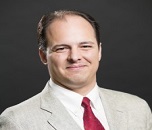
Nathan P Salowitz
University of Wisconsin-Milwaukee, USA
Title: Mechanics based design and testing of crack closing self-healing materials to carry external loads
Biography
Biography: Nathan P Salowitz
Abstract
Self-healing materials have innate capabilities to restore geometry and mend damage in a structure. These materials have tremendous potential to prevent catastrophic failures and overcome fatigue issues by repairing structural damage as it occurs, while in service. In order to restore bulk deformations and close macroscopic cracks self-healing materials have been developed that are essentially sparse fiber composites, composed of a structural matrix reinforced with shape memory fibers. This composition is capable of closing large cracks and restoring bulk geometry in a free, unloaded state. A significant limitation of this technique is that structures are not capable of overcoming or withstanding externally applied loads while restoring their original geometry. This is because the shape memory material used to restore geometry is currently cast in its trained geometry. Therefore, activation and recovery will only provide loads to return to that original geometry, negating plastic deformation of the matrix and any externally applied load will cause deviation, inhibiting geometric restoration. Seeking to overcome this limitation, polymer samples were created containing prestrained nickel titanium shape memory fibers that undergo constrained recovery upon activation. Actuation of the shape memory fibers generates internal/residual loads allowing the healed structure to withstand and overcome externally applied loads. Theory, experimental results, analysis and future vision for self-healing materials composed of prestrained nickel titanium shape memory fibers are discussed. A mechanics based derivation is presented relating internal/residual loads to allowable externally applied loads. Experimental results are presented from samples composed of prestrained shape memory alloy reinforced polymer with an internal framework to ensure load transfer between components. Samples were loaded in tension with a constant crosshead speed until matrix failure, then healed through thermal actuation and loaded to crack opening multiple times. Analysis of theory and experimental results are presented.
